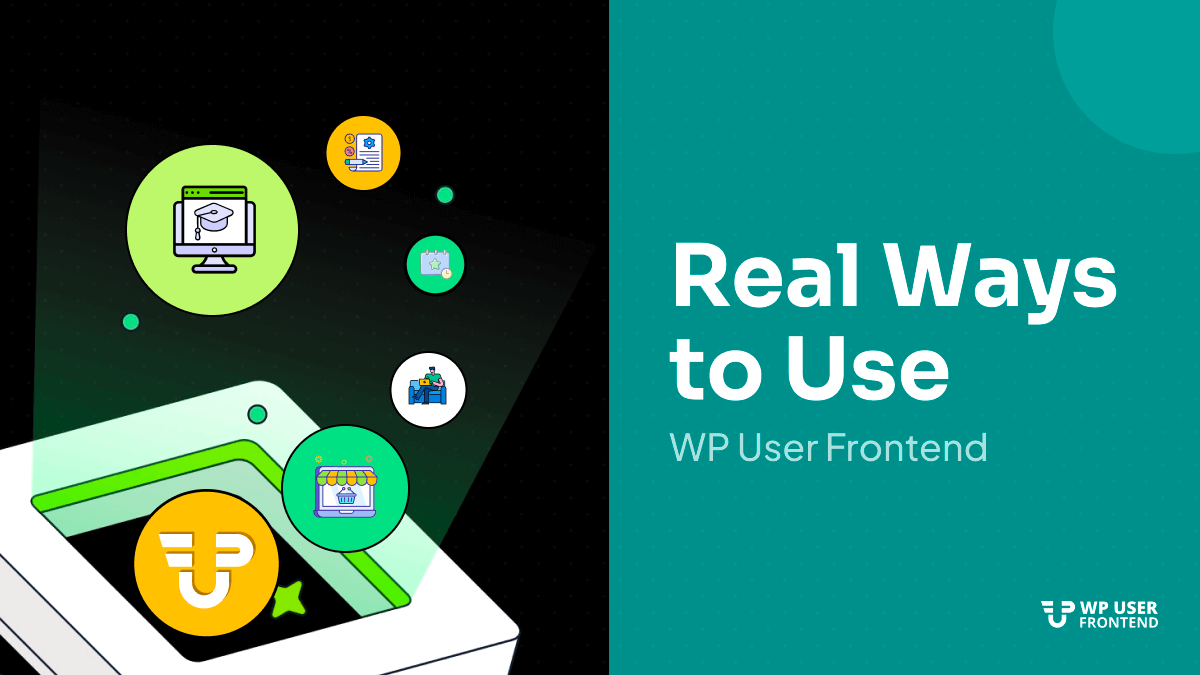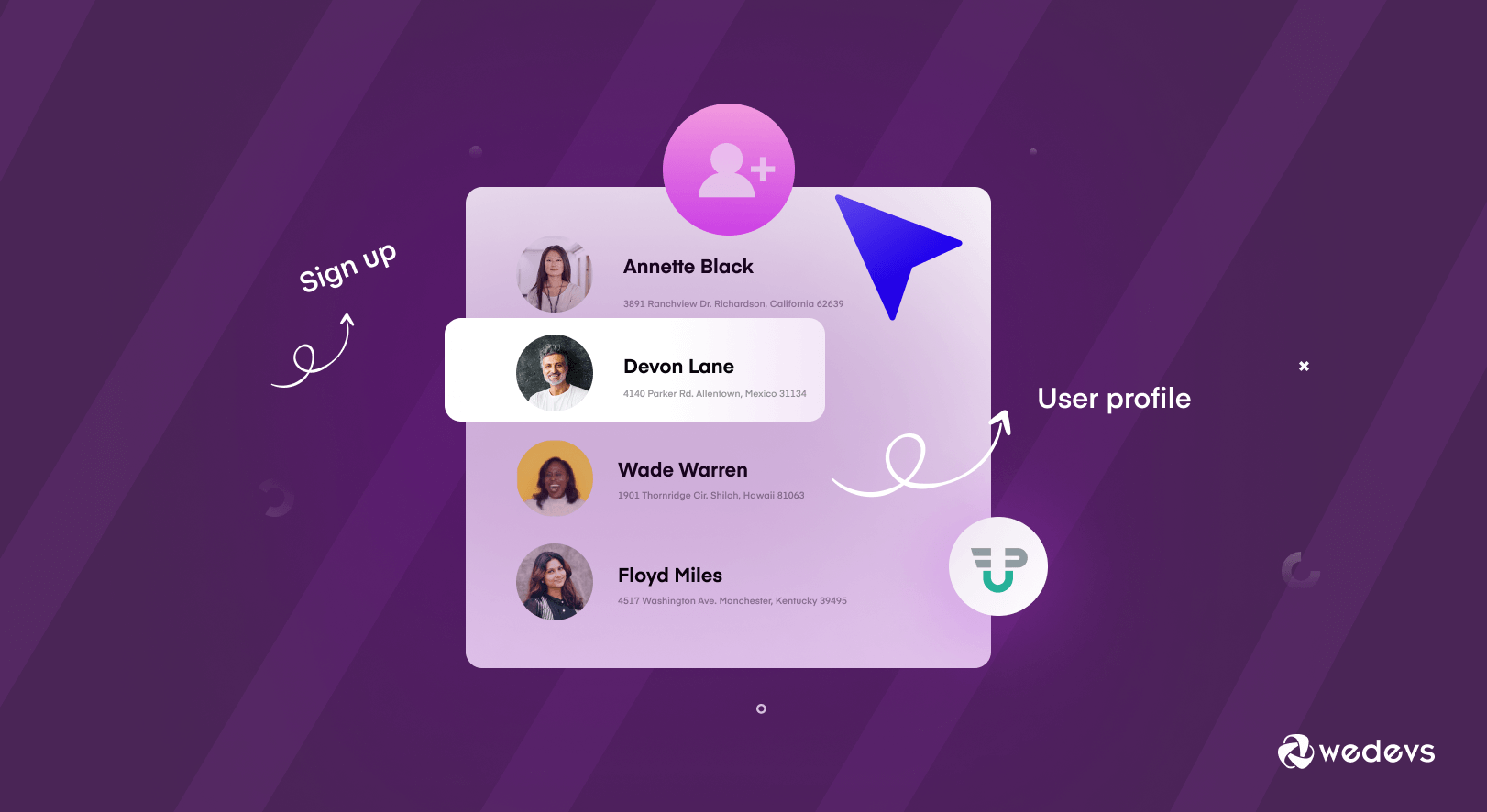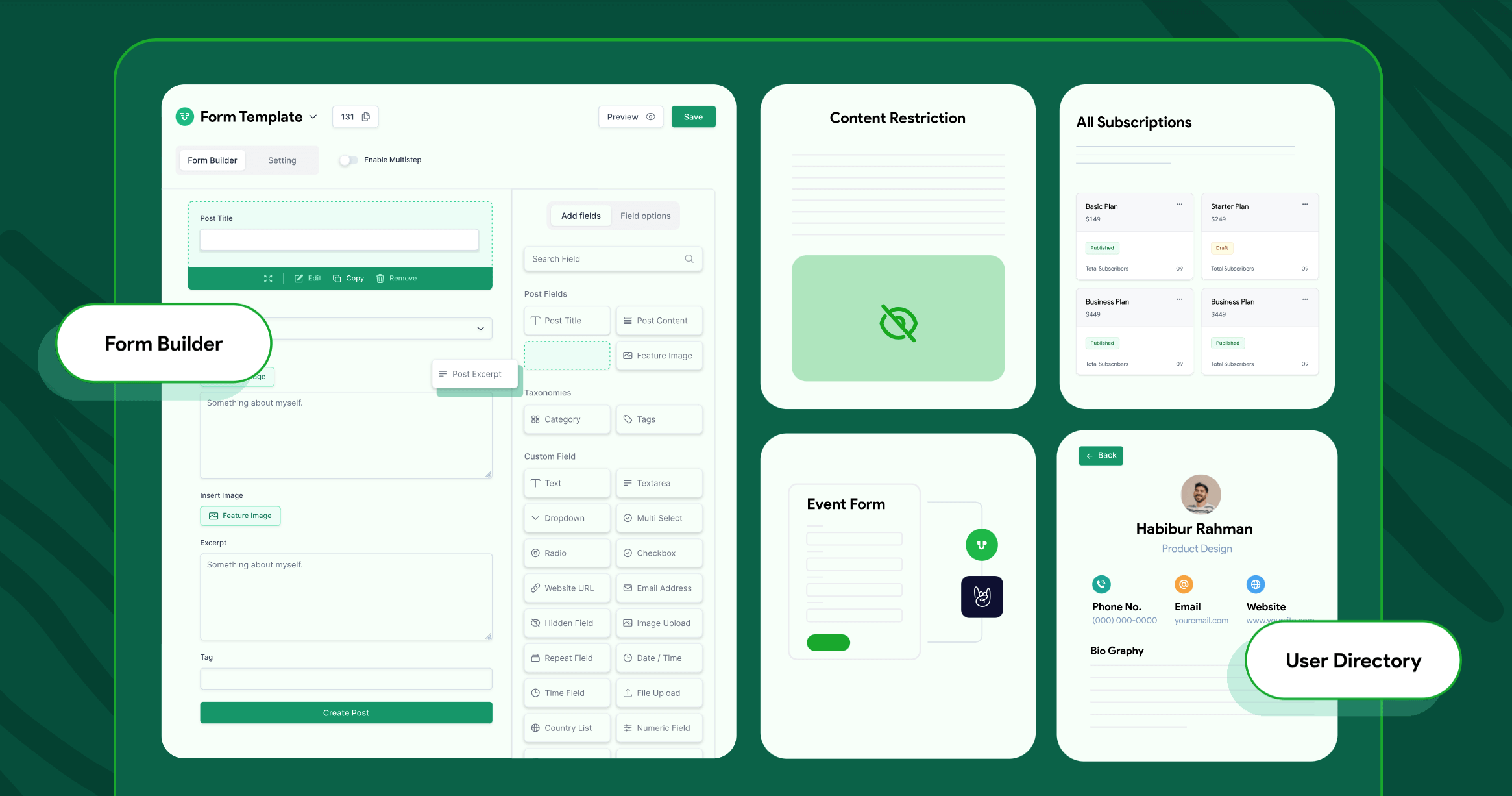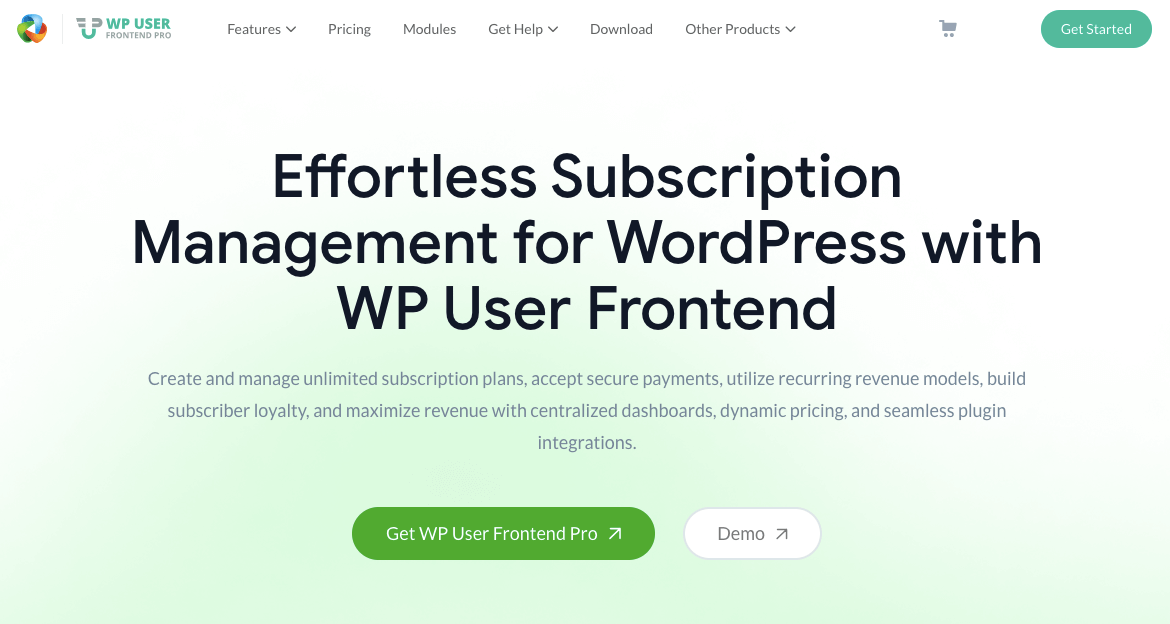
11 Real-World Use Cases of WP User Frontend You Should Know
Building a website today goes way beyond adding a few pages. Your site could be a school, a shop, a news portal, a marketplace, or even a thriving community. But here’s the problem: managing users, collecting content, and handling submissions from the backend can be tricky, slow, and overwhelming—especially for non-technical users.
That’s where WP User Frontend steps in. It puts the power in your users’ hands, letting them register, post, edit, and manage everything right from the frontend. The best part? WP User Frontend grows with you, adapting to your site’s needs whether you’re just starting out or scaling up.
In this post, we’ll explore 11 real-world use cases that prove just how flexible and powerful WP User Frontend really is. From education to eCommerce, media to healthcare, these practical examples might just spark your next big idea.
Top WP User Frontend Use Cases for Real-World Inspiration
Discover the best WP User Frontend use cases to inspire your next project. See how businesses, creators, and communities leverage frontend posting, dashboards, and forms.
1. Education & Learning Platforms

Running an online school or training center comes with one big challenge: managing students, teachers, and content smoothly. Most learning sites struggle with clunky backends, leaving students lost and admins overwhelmed.
With WP User Frontend, education platforms get a simpler way to manage it all. Students can register, upload assignments, or build their own portfolios directly from the frontend. Teachers can share lessons, post resources, and track progress without digging through WordPress admin menus.
Example: Imagine a coaching center that lets students submit weekly projects through a custom frontend form. The submissions go straight into the system, neatly organized, ready for review. No manual emails or messy spreadsheets.
Why it works:
- No backend training needed for students or staff
- Keeps the platform secure by limiting backend access
- Flexible enough to handle assignments, courses, and resources in one place
2. Media, News & Content Publishing
Running a media site often means juggling dozens of writers, contributors, and editors. If everyone has to learn the backend, you’re bound to face delays, confusion, and formatting chaos.
With WP User Frontend, content publishing becomes smoother. Writers can submit articles, bloggers can share stories, and guest contributors can pitch ideas all through clean, customizable frontend forms. Editors still get full control to review and publish, but contributors never need to touch the backend.
Example: Imagine a regional news portal where freelance reporters upload their stories straight from the field. They don’t need WordPress training. They just fill out a submission form, attach photos, and hit submit. The editorial team then reviews, edits, and pushes it live.
Why it works:
- Speeds up publishing with easy submission forms
- Keeps editorial control while involving more contributors
- Maintains consistent formatting across all submissions
3. eCommerce, Marketplaces & Product Listings

Marketplaces are exciting to build, but they come with one headache: vendor management. Giving every seller backend access isn’t just messy, it’s risky. You don’t want vendors poking around where they shouldn’t.
That’s why WP User Frontend is such a game-changer for e-Commerce. It lets vendors upload products and manage listings right from the frontend. No backend logins required, no learning curve, and no compromise on security.
Example: Picture a niche marketplace for handmade crafts. Vendors can easily add new products with images, pricing, and descriptions through a simple form. Buyers see polished listings, while sellers never touch the backend. The site owner keeps everything under control without endless admin work.
Why it works:
- Vendors stay focused on selling, not learning the WordPress backend
- Reduces admin workload and support requests
- Keeps your site secure by restricting backend access
4. Agencies & Freelancers
Agencies and freelancers often juggle multiple clients at once. Collecting briefs, content, and project details over endless emails isn’t just frustrating; it’s a recipe for things slipping through the cracks.
That’s where WP User Frontend makes life easier. You can create custom frontend forms for client onboarding, project requests, or content submissions. Clients don’t need WordPress training; they just fill out the form, and everything gets stored neatly in your system.
Example: Imagine a freelance designer. Instead of chasing clients for project requirements, the designer sends them a custom form where they can upload logos, brand guidelines, and design preferences. All the info lands in the right place, ready to work on.
Why it works:
- Cuts down back-and-forth emails
- Keeps client requests organized and accessible
- Delivers a more professional client experience
5. Events, Tickets & Community Activities

Organizing events is exciting, but collecting submissions, managing activities, and keeping everyone in the loop can quickly get chaotic. If you rely only on backend access, you’ll spend more time managing logistics than growing your community.
With WP User Frontend, event management becomes effortless. Organizers can submit event details, collect attendee information, list ticket information, or promote community meetups directly from the frontend. Attendees see a clean, structured listing, while you keep everything organized behind the scenes.
Example: Think of a local photography club. Members can submit upcoming workshops, photo walks, or meetups using a simple event form. The submissions show up on the site in a consistent layout, making it easy for others to browse and join. No emails, no spreadsheets, no confusion.
Why it works:
- Streamlines event submissions and approvals
- Keeps communities active with user-driven content
- Saves time by eliminating manual coordination
6. Immigration, Legal & Social Services
Immigration firms, law practices, and social service providers handle sensitive information every single day. Collecting applications and documents through emails isn’t just messy, it’s risky. Data can get lost, delayed, or worse, exposed.
With WP User Frontend, you can set up secure and structured frontend forms for applications, case submissions, and document uploads. Clients submit everything in one place, and your team manages it without giving anyone backend access.
Example: Picture an immigration consultant who helps applicants file visa requests. Instead of receiving scattered PDFs by email, clients upload all required documents directly through a frontend form. The consultant reviews them safely in the backend, with everything stored in order.
Why it works:
- Provides a secure and organized submission process
- Reduces back-and-forth communication errors
- Builds client trust with a professional, streamlined system
7. Listings & Directories

Directories are everywhere, from real estate portals to job boards to volunteer networks. But managing them from the backend is often a nightmare. You don’t want dozens of users poking around the admin area just to add or update a listing.
With WP User Frontend, you can create powerful directories where users submit and manage their listings from the frontend. Whether it’s properties, job posts, or community resources, everything flows through custom forms and displays in clean layouts.
Example: Imagine a real estate site where agents add new property listings with photos, pricing, and descriptions directly from the frontend. They can edit or update details anytime, while the site owner keeps control over approvals and publishing.
Why it works:
- Empowers users to manage their own listings
- Keeps backend access limited to admins
- Works for any niche: jobs, real estate, services, or even pet adoptions
8. Professional Services / Niche Use Cases
Not every business fits into a big category like eCommerce or education. Coaches, consultants, trainers, and specialists often need tailored tools to run their services smoothly. The challenge? Generic WordPress forms don’t always cover these unique workflows.
That’s where WP User Frontend shines. You can build custom forms that fit your exact process whether it’s client intake, booking requests, or progress tracking. Everything happens on the frontend, making it simple for both you and your clients.
Example: A fitness coach sets up a progress log form where clients submit their weekly workout results. The coach reviews entries privately, tracks improvements, and adjusts plans accordingly. No messy spreadsheets, no endless emails, just a streamlined system.
Why it works:
- Adapts to niche industries and unique workflows
- Enhances client experience with easy submissions
- Cuts down on manual admin tasks so professionals focus on their craft
9. Healthcare, Wellness & Support

Healthcare providers, wellness centers, and support services face a common challenge: collecting patient or client information efficiently while keeping data secure. Traditional backend methods can be slow, confusing, and risky for sensitive information.
With WP User Frontend, patients or clients can submit appointments, intake forms, or support requests directly from the frontend. Staff can manage everything in an organized, secure system without exposing backend access.
Example: A wellness center allows clients to schedule therapy sessions and submit health questionnaires through a frontend form. The staff receives all submissions in a structured format, ready to manage without juggling emails or spreadsheets.
Why it works:
- Maintains privacy and security for sensitive data
- Streamlines appointment scheduling and intake processes
- Reduces administrative overhead, letting staff focus on care
10. Lifestyle, Food & Creative Platforms
Creative communities and lifestyle sites thrive on user-generated content. But letting users submit recipes, portfolios, or creative work can become messy if handled through the backend. You need an easy, engaging way for users to contribute without overwhelming site admins.
With WP User Frontend, contributors can submit their creations through frontend forms, complete with images, descriptions, and categories. Everything is neatly organized and displayed in attractive layouts, keeping your platform engaging and professional.
Example: A food blogger runs a recipe-sharing platform. Foodies submit their favorite dishes via a simple frontend form, including photos, ingredients, and cooking steps. The admin reviews, approves, and publishes submissions without ever touching the backend.
Why it works:
- Encourages more user participation with easy submission forms
- Keeps content organized and visually appealing
- Simplifies admin work while maintaining quality control
11. Social Networks, Forums & Communities

Building an engaging online community is more than just letting people register. Members want to create profiles, post content, and interact without learning WordPress or accessing the backend. Managing this manually can quickly become overwhelming.
With WP User Frontend, you can give members control over their profiles, posts, and interactions, all from the frontend. Forums, directories, and social feeds stay organized, and admins maintain oversight without micromanaging.
Example: A hobbyist photography community lets members upload photos, write posts, and comment on each other’s work via frontend forms. Everyone participates actively, and the admin keeps the community safe and well-structured.
Why it works:
- Empowers members to manage their own content and profiles
- Encourages engagement with minimal admin effort
- Keeps communities organized, secure, and user-friendly
Top 5 WP User Frontend Features Based on Usage Data
WP User Frontend comes packed with powerful tools, but some features consistently stand out across industries and use cases. We gathered only the most frequently used features in this section based on the data we have at our disposal. Let's have a look at the most used features, based on real-world usage:
1. Login and Registration
Profile building is the backbone of any user-driven site. Almost every WPUF setup relies on this feature. It allows users to register, log in, and manage their accounts without touching the WordPress backend. Be it a marketplace, a learning platform, or a community site, this is the starting point for user interaction.
2. Post Form (Post Type)
The second most popular feature. This front-end form creation lets users create posts or custom post types directly from the frontend. It’s perfect for blogs, directories, portfolios, and other content-heavy sites. Users can submit content, images, or listings without needing admin access, keeping your workflow organized and secure.

3. WPUF Dashboard & Account
Many sites pair frontend forms with the WPUF dashboard. This feature gives users a personal space to view and manage their submissions, update profiles, or track activity. It’s a favorite for membership sites, agencies, and professional service platforms.
4. Subscription
The Subscription feature is used on sites that offer premium content or services. Subscriptions integrate seamlessly with frontend forms and dashboards, enabling recurring memberships or access control without backend hassle.
5. Post Form (Product)
Ideal for eCommerce and marketplace platforms. Vendors can upload products, manage listings, and update inventories directly from the frontend. This keeps the process simple for sellers while giving site owners control over approvals.
Other features like Registration Form, User Directory, and Content Restriction are also used but less frequently. They add specialized functionality for directories, niche marketplaces, and secure content management.
Tips for Getting the Most Out of WP User Frontend
WP User Frontend is incredibly versatile, but a few smart strategies can help you unlock its full potential. Whether you’re managing a marketplace, a learning platform, or a community site, these tips will make your life easier and your site more powerful.
1. Start with Login and Registration
Make sure your registration and login process is smooth and user-friendly. A clear, simple form encourages sign-ups and reduces friction for your users. Consider customizing fields for your specific audience to collect the right information upfront.
2. Leverage Post Forms for Every Need
Use Post Form (Post Type) and Post Form (Product) wisely. Customize forms for different content types for blog posts, product listings, or event submissions. Use conditional fields to show only relevant options, keeping forms simple and intuitive.
3. Take Advantage of the Dashboard & Account
The WPUF dashboard is more than just a control panel. Encourage users to manage their submissions, update profiles, and track their activity here. A personalized dashboard improves engagement and reduces admin support requests.
4. Use Subscriptions and Content Restriction Thoughtfully

For membership or premium content sites, pair subscription and content restriction features. Restrict access to certain posts or sections and tie it to subscription levels for a seamless monetization flow.
5. Design Forms for Mobile Users
Most users will interact with your site from mobile devices. Make sure your frontend forms are mobile-friendly. Keep fields concise, use intuitive layouts, and test forms on multiple devices.
6. Combine Features for Maximum Impact
The real power comes from using features together. For example, a marketplace site could use Login & Registration + Dashboard + Post Form (Product) + Subscription to create a full vendor ecosystem without backend access.
7. Regularly Review and Optimize
Check which forms and submissions get the most engagement. Remove unnecessary fields, simplify workflows, and adjust notifications to keep your site running efficiently.
Pro tip: Start small with the core features your users need most, then gradually add advanced functionality as your site grows. This keeps the experience simple while still leveraging WPUF’s full power.
Final Thoughts
WP User Frontend is more than just a plugin; it has the features and modules that can replace at least five other plugins. It’s a versatile toolkit that adapts to almost any website. By leveraging its most popular features and following a few smart tips, you can streamline workflows, boost engagement, and create a truly user-friendly experience.
Ready to see it in action? Try WP User Frontend Pro today and unlock the power of frontend posting for your site.